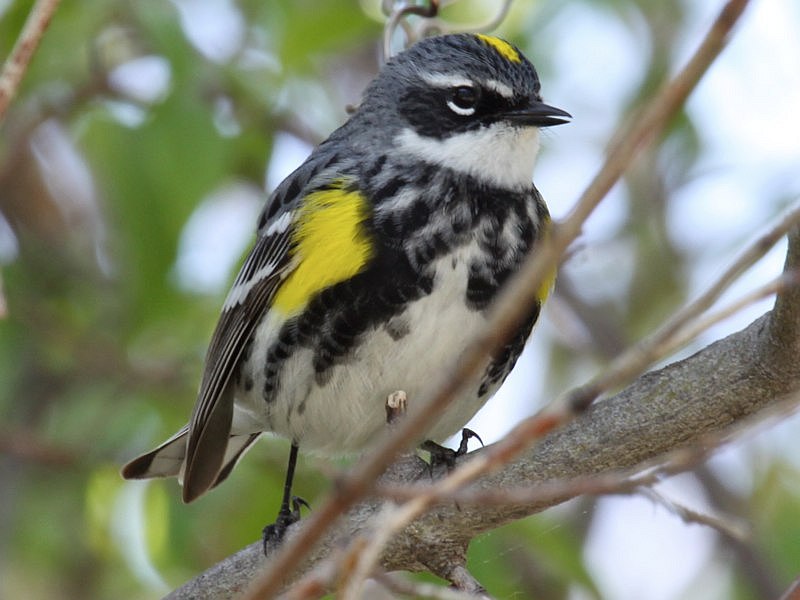
5 November 2010
Last week we learned that the stages of birds’ digestive tracts are in a different order than our own so that the heaviest parts are at their center of gravity while they fly.
After birds swallow their food they chemically digest it (proventriculus), then “chew” it in the gizzard. If they swallow something indigestible and bulky, they regurgitate it as a pellet. Some species even get nutrition from normally indigestible substances, a talent that has further modified their digestive systems. The yellow-rumped warbler is one example.
Wax is impossible to digest for most animals and birds. Its description as a “saturated long-chain fatty acid” even sounds dangerous (saturated! fatty!) yet the yellow-rump depends on wax for its winter food. This makes it unique among warblers, most of whom eat insects and must leave North America by September to survive. The yellow-rump sticks around because it switches its diet to wax-coated bayberries.
How has the yellow-rump’s digestive system adapted to do this? They have higher levels of gall bladder and intestinal bile-salt than other birds and their digestive system absorbs the food more slowly. They probably even process it for a longer time, possibly moving it back and forth so the gizzard can grind it again.
The yellow-rumps’ love of bayberry myrtle also gave them an alternate name. The eastern subspecies is called the “myrtle warbler.”
So now you know why yellow-rumped warblers don’t go far south in the winter: They’re eating waxy berries.
(photo of a springtime yellow-rumped warbler by Chuck Tague)